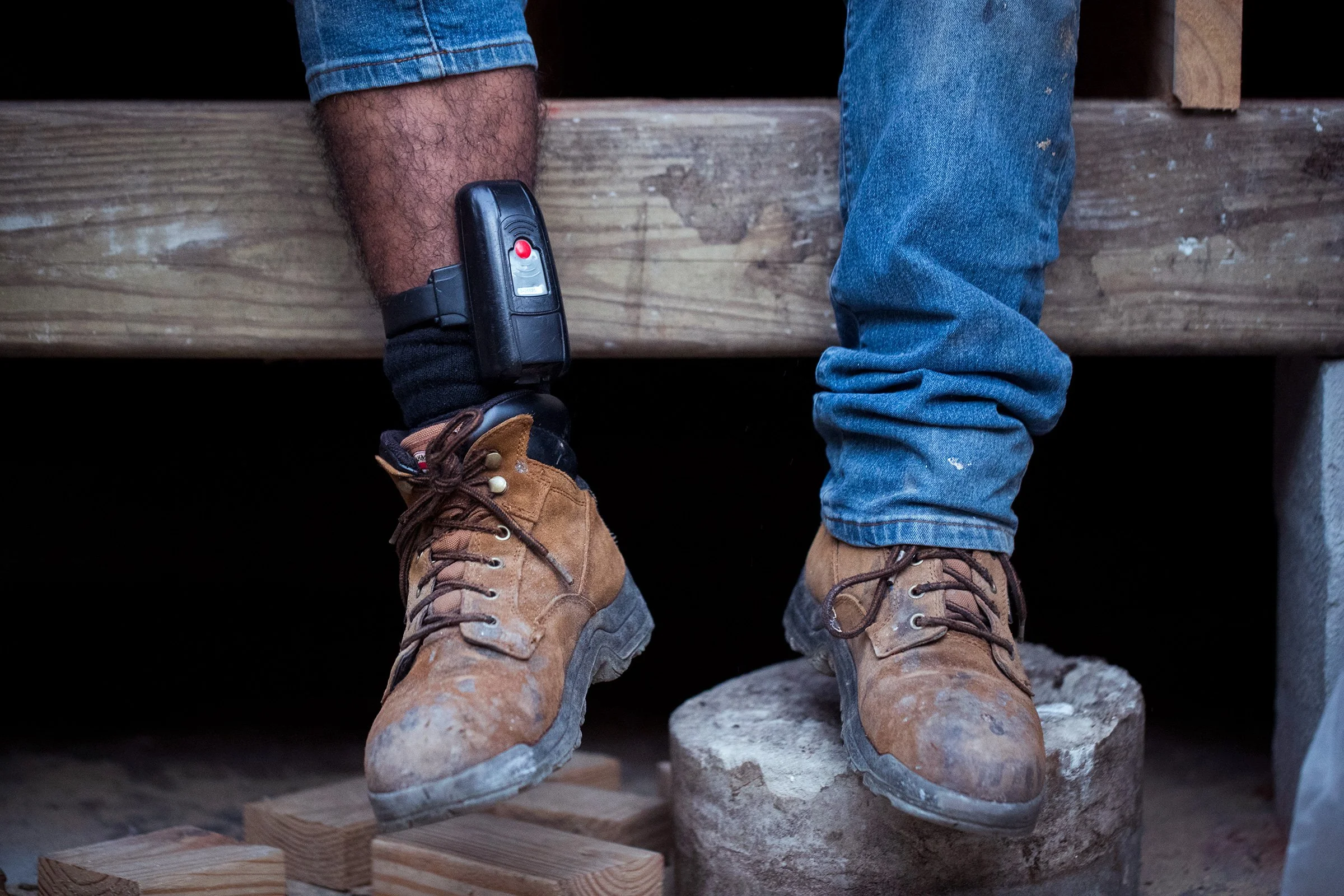Some devices have the potential to reveal not just the wearer’s location, but also capture personal data.
In an ad released last spring by top electronic monitoring manufacturer BI Incorporated, viewers are introduced to the VeriWatch, one of the latest in the company’s suite of digital surveillance tools. The short video follows a day in the life of a VeriWatch user: how he starts his morning unplugging his charger, getting ready for work, and snapping a selfie using his watch — which looks similar to an Apple Watch. Prepared for the day, he then grabs his keys, goes to work, and later returns home to spend quality time with his wife and son, being sure to charge the device along the way.
The ad highlights how the VeriWatch departs from a typical smart watch available to the general public. For example, the selfie snapped in the morning isn’t for social media; it’s a biometric authentication to confirm the wearer’s identity to parole or probation officers. The ad also intends to convey how minimally the device impedes the user’s daily life. It seeks to show how this new era of electronic monitoring differs from the ankle monitors traditionally associated with “house arrest.”
Companies are increasingly developing these tools to pilot within prison and jail systems and on those living under “community supervision” — meaning people who are surveilled and monitored while living beyond prison walls. These tools are often presented as “alternatives to detention,” but privacy and human rights advocates argue that they actually expand the system instead of replacing it.
This expansion can be particularly insidious when it takes the form of digital tools that the public is already familiar with, creating a veneer of innocuity that shields the monitoring devices from more widespread scrutiny.


